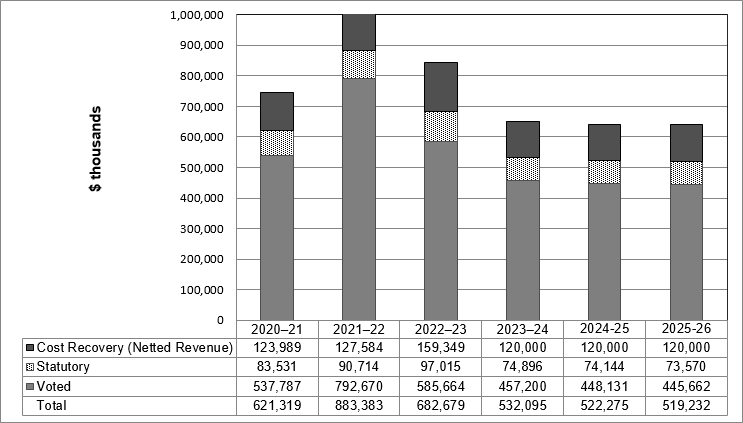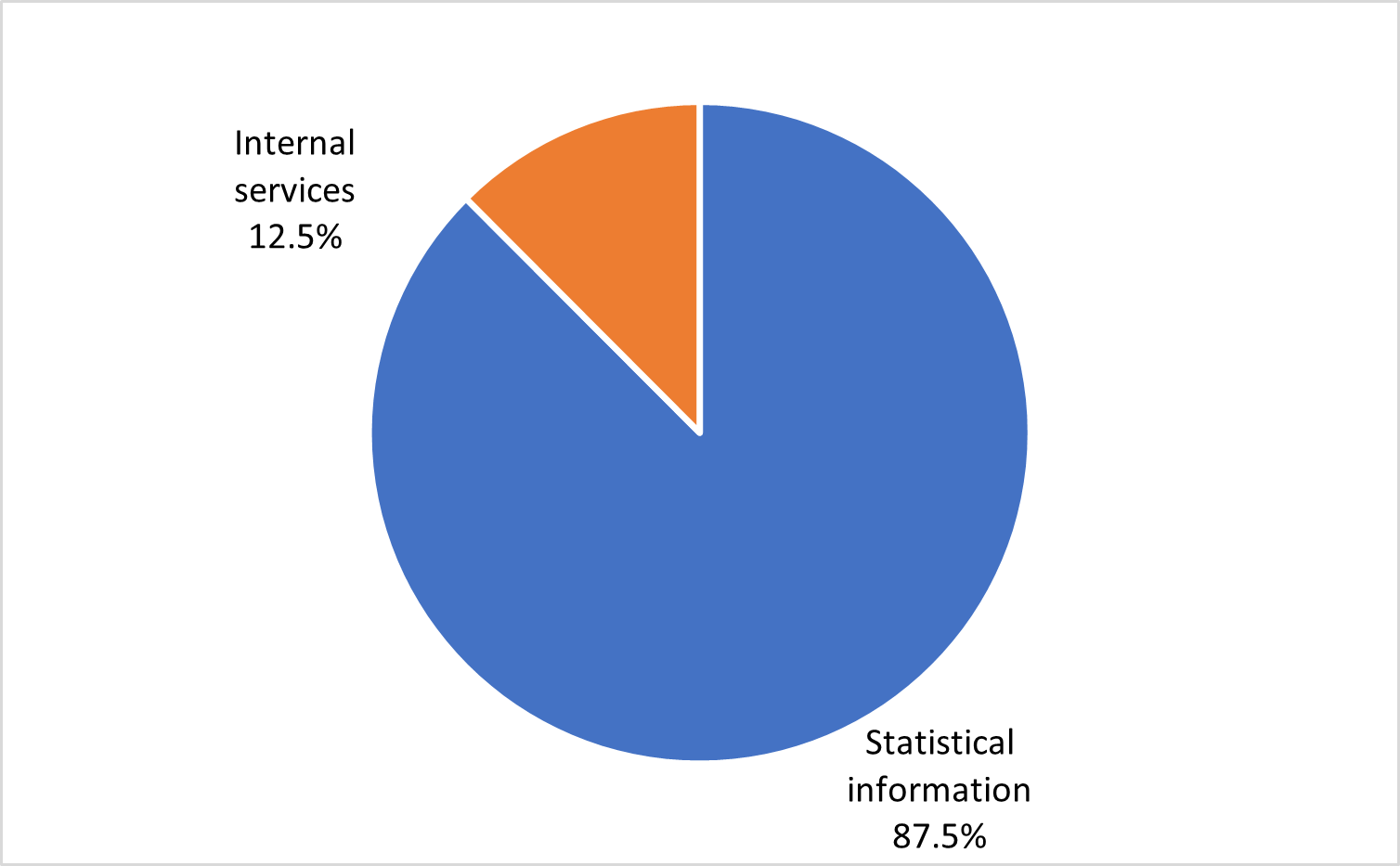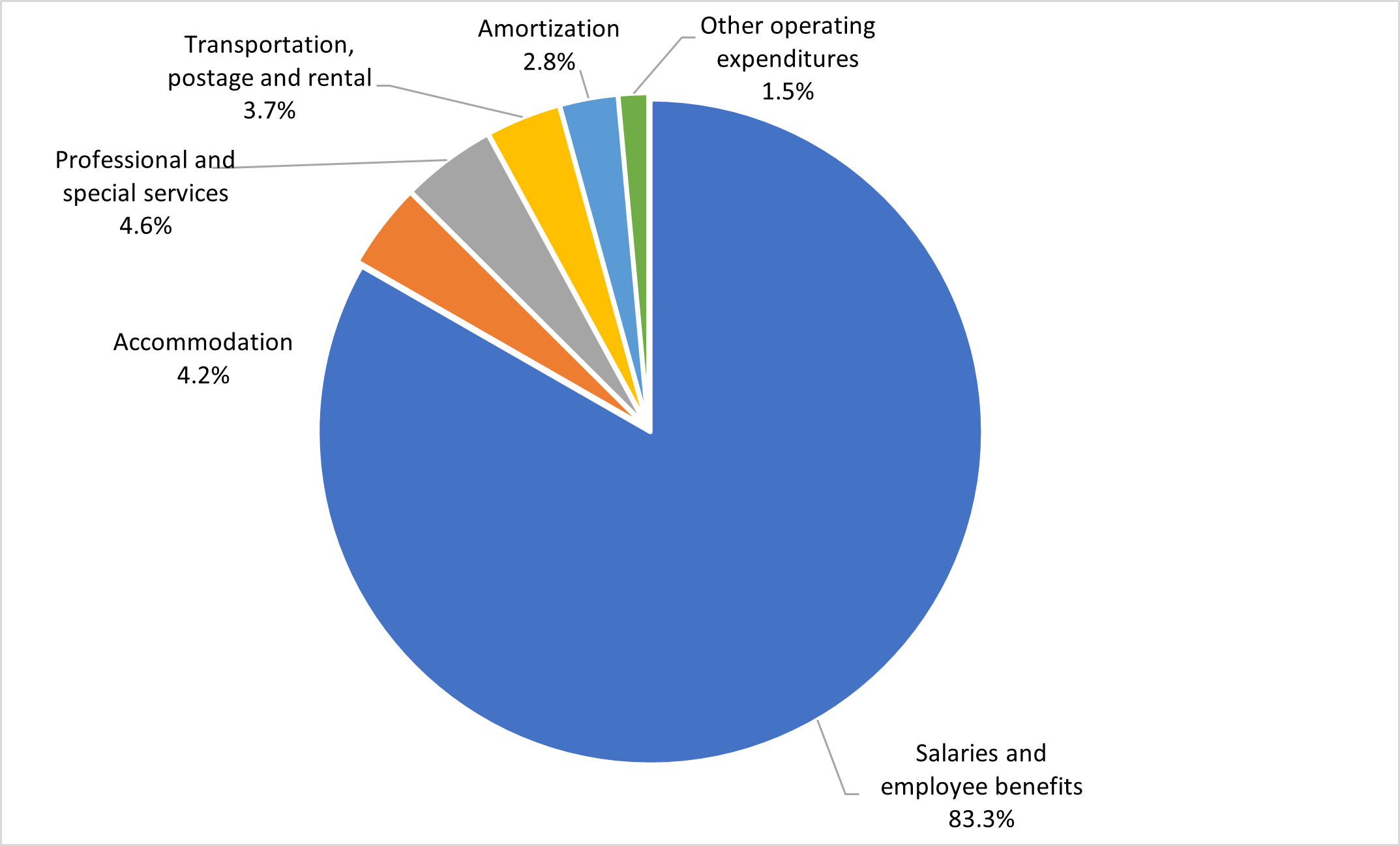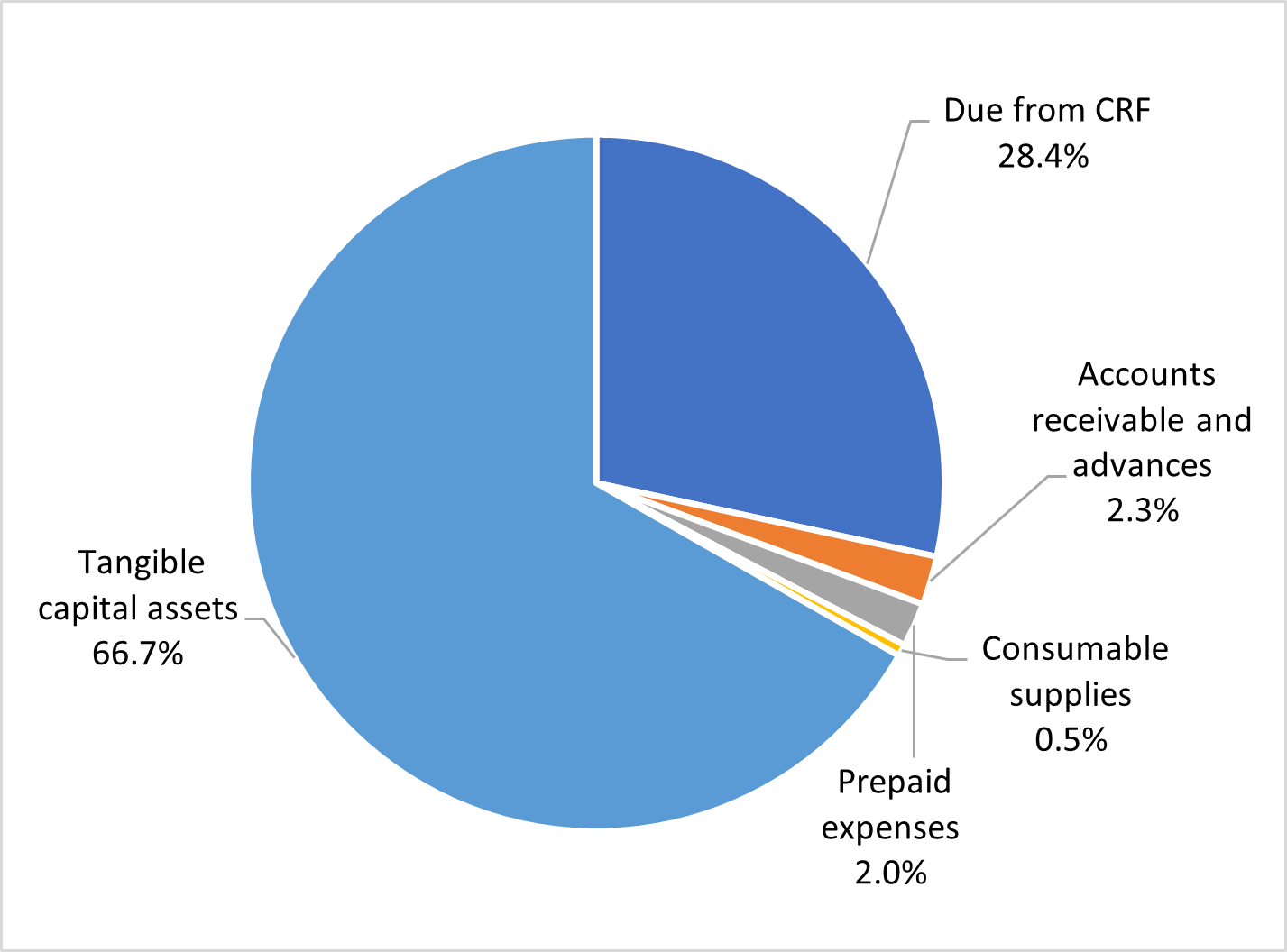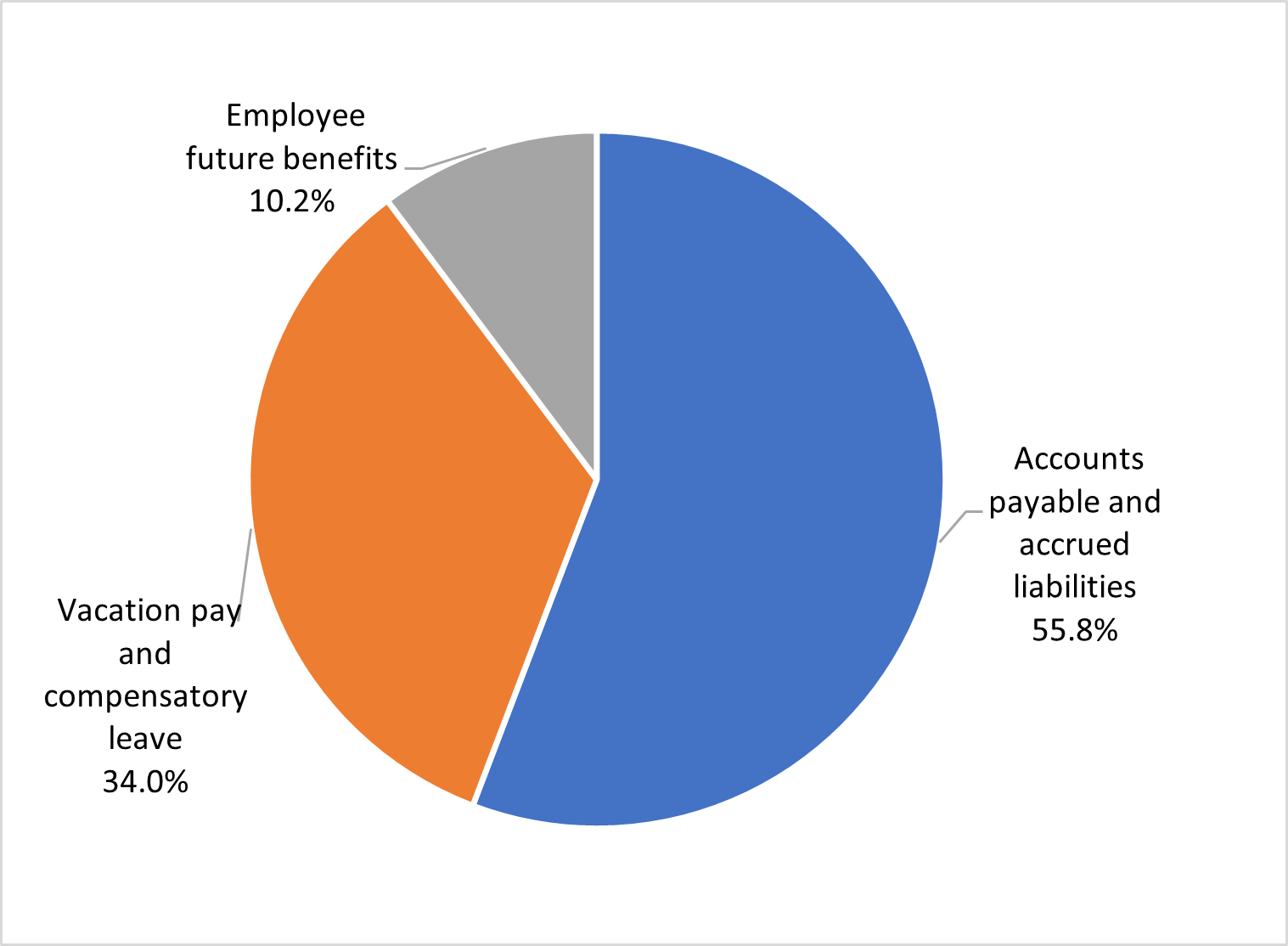Introduction
Purpose
The purpose of the field crop surveys is to obtain information on seeded and harvested field crop areas, average yields, production and on-farm stocks at strategic times over the course of a typical crop cycle, which ranges from spring to late fall. Therefore, the field crop surveys are conducted in June, November and December. Model-based estimates are used for March on-farm stocks and model-based estimates of yields and production, obtained from satellite imagery, are produced in July and August. Seeding intentions are collected in December.
Additional information
Your information may also be used by Statistics Canada for other statistical and research purposes.
Authority
This information is collected under the authority of the Statistics Act, Revised Statutes of Canada, 1985, Chapter S-19.
Completion of this questionnaire is a legal requirement under this act.
Purpose
The purpose of the field crop surveys is to obtain information on seeded and harvested field crop areas, average yields, production and on-farm stocks at strategic times over the course of a typical crop cycle, which ranges from spring to late fall. Therefore, the field crop surveys are conducted in June, November and December. Your information may also be used by Statistics Canada for other statistical and research purposes.
Confidentiality
By law, Statistics Canada is prohibited from releasing any information it collects that could identify any person, business, or organization, unless consent has been given by the respondent, or as permitted by the Statistics Act. Statistics Canada will use the information from this survey for statistical purposes only.
Data-sharing agreements
To reduce respondent burden, Statistics Canada has entered into data-sharing agreements with provincial and territorial statistical agencies and other government organizations, which have agreed to keep the data confidential and use them only for statistical purposes. Statistics Canada will only share data from this survey with those organizations that have demonstrated a requirement to use the data.
Section 11 of the Statistics Act provides for the sharing of information with provincial and territorial statistical agencies that meet certain conditions. These agencies must have the legislative authority to collect the same information, on a mandatory basis, and the legislation must provide substantially the same provisions for confidentiality and penalties for disclosure of confidential information as the Statistics Act. Because these agencies have the legal authority to compel businesses to provide the same information, consent is not requested and businesses may not object to the sharing of the data.
For this survey, there are Section 11 agreements with the provincial statistical agencies of Newfoundland and Labrador, Nova Scotia, New Brunswick, Quebec, Ontario, Manitoba, Saskatchewan, Alberta and British Columbia. The shared data will be limited to information pertaining to business establishments located within the jurisdiction of the respective province.
Section 12 of the Statistics Act provides for the sharing of information with federal, provincial or territorial government organizations. Under Section 12, you may refuse to share your information with any of these organizations by writing a letter of objection to the Chief Statistician and returning it with the completed questionnaire. Please specify the organizations with which you do not want to share your data.
For this survey, there are Section 12 agreements with the Prince Edward Island statistical agency, the Ontario Ministry of Agriculture, Food and Rural Affairs as well as with the Manitoba Department of Agriculture.
For agreements with provincial and territorial government organizations, the shared data will be limited to information pertaining to business establishments located within the jurisdiction of the respective province or territory.
Record linkage
To enhance the data from this survey and to minimize the reporting burden, Statistics Canada may combine it with information from other surveys or from administrative sources.
Security of emails and faxes
Statistics Canada advises you that there could be a risk of disclosure during facsimile or email. However upon receipt, Statistics Canada will provide the guaranteed level of protection afforded all information collected under the authority of the Statistics Act.
Note: Our online questionnaires are secure, there is no risk of data interception when responding to Statistics Canada online surveys.
Reporting instructions
- Please print in ink.
- Consult the reporting guide at Integrated Business Statistics Program (IBSP) for further information.
Business or organization and contact information
1. Please verify or provide the business or organization's legal and operating name and correct where needed. Note: Legal name modifications should only be done to correct a spelling error or typo.
- Legal name
- Operating name (if applicable)
2. Please verify or provide the contact information of the designated business or organization contact person for this questionnaire and correct where needed.
Note: The designated contact person is the person who should receive this questionnaire. The designated contact person may not always be the one who actually completes the questionnaire.
- First name
- Last name
- Title
- Preferred language of communication
- Mailing address (number and street)
- City
- Province, territory or state
- Postal code or ZIP code
- Country
- Email address
- Telephone number (including area code)
- Extension number (if applicable)
- Fax number (including area code)
3. Please verify or provide the current operational status of the business or organization identified by the legal and operating name above.
- Operational
- Not currently operational e.g., temporarily or permanently closed, change of ownership
- Why is this business or organization not currently operational?
- Seasonal operations
- Ceased operations
- Sold operations
- Amalgamated with (an) other business(es) or organization(s)
- Temporarily inactive but will re-open
- No longer operating due to other reason(s)
- Business or organization and contact information - Question identifier: 3a
- Seasonal operations
- When did this business or organization close for the season?
Date: - When does this business or organization expect to resume operations?
Date:
- When did this business or organization close for the season?
- Seasonal operations
- Business or organization and contact information - Question identifier: 3b
- Ceased operations
- When did this business or organization cease operations?
Date: - Why did this business or organization cease operations?
- Bankruptcy
- Liquidation
- Dissolution
- Other reasons - specify:
- Why did this business or organization cease operations?
Other reasons - specify:
- When did this business or organization cease operations?
- Ceased operations
- Business or organization and contact information - Question identifier: 3c
- Sold operations
- When was this business or organization sold?
Date: - What is the legal name of the buyer?
- When was this business or organization sold?
- Sold operations
- Business or organization and contact information - Question identifier: 3d
- Amalgamated with (an) other business(es) or organization(s)
- When did this business or organization amalgamate?
Date: - What is the legal name of the resulting or continuing business or organization?
- What is (are) the legal name(s) of the other amalgamated business(es) or organization(s)?
- When did this business or organization amalgamate?
- Amalgamated with (an) other business(es) or organization(s)
- Business or organization and contact information - Question identifier: 3e
- Temporarily inactive but will re-open
- When did this business or organization become temporarily inactive?
Date: - When does this business or organization expect to resume operations?
Date: - Why is this business or organization temporarily inactive?
- When did this business or organization become temporarily inactive?
- Temporarily inactive but will re-open
- Business or organization and contact information - Question identifier: 3f
- No longer operating due to other reason(s)
- When did this business or organization cease operations?
Date: - Why did this business or organization cease operations?
- When did this business or organization cease operations?
- No longer operating due to other reason(s)
- Why is this business or organization not currently operational?
Main activity
4. Please verify or provide the current main activity of the business or organization identified by the legal and operating name.
Note: The described activity was assigned using the North American Industry Classification System (NAICS).
- This is the current main activity. - Go to next section
- This is not the current main activity.
Please provide a brief but precise description of this business or organization's main activity.
e.g., breakfast cereal manufacturing, shoe store, software development
5. Was this business or organization's main activity ever classified as:
- Yes
- No - Go to next section
6. When did the main activity change?
Date:
All land operated
The following questions deal with all land operated.
Include land rented from other operations and Crown or public land used for agricultural purposes.
Exclude land rented to other operations.
Unit of measure
1. For the following questions, what unit of measure will be used to report land areas?
- Acres
- Hectares
- Arpents (for Québec only)
Fall rye and winter wheat seeded in previous year
2. In the fall of 2022, did you seed any fall rye and/or winter wheat?
- Yes - Go to question 3
- No - Go to question 7
3. For the following crops, indicate the area seeded in the fall of 2022 and the area harvested as grain.
- Fall rye
- Winter wheat
4. For the harvested area of fall rye and winter wheat, do you prefer to report the average yield or the total production?
- Average yield - Go to question 5
- Total production - Go to question 6
5. For the fall rye and winter wheat, indicate the average yield you obtained in 2023.
Go to question 7
6. For the fall rye and winter wheat, indicate the total production you obtained in 2023.
Total production: Unit of measure
(select per crop)
- Bushels
- Metric tonnes
- Imperial tons
- Kilograms
- Pounds
- Hundredweights
- Fall rye
- Winter wheat
Fall rye and winter wheat seeded this year
7. Did you or do you intend to seed any fall rye or winter wheat in the fall of 2023?
- Yes - Go to question 8
- No - Go to question 9
8. For the fall rye and/or winter wheat, what is the area you seeded or intend to seed in the fall of 2023?
- Fall rye
- Winter wheat
Crops seeded 2023
9. Did you seed any crops in 2023?
- Yes - Go to question 10
- No - Go to question 30
Areas seeded and harvested in 2023
10. For the following crops, what is the seeded area and the area harvested or expected to be harvested as grain in 2023?
Area harvested or expected to be harvested as grain excludes areas of crops to be baled, used for green feed, lost to natural causes (e.g., flooding) or abandoned (due to poor quality).
- Barley
- Buckwheat
- Canary seed, hairless (canario)
- Canary seed, regular
- Canola (rapeseed)
- Chickpeas, desi
- Chickpeas, kabuli
- Chickpeas, other and unknown
- Corn for grain
Include seed corn.
Exclude sweet corn and corn for silage. - Corn for silage
- Dry beans, black - black turtle, preto
- Dry beans, cranberry - romano
- Dry beans, dark red kidney
- Dry beans, great northern
- Dry beans, light red kidney
- Dry beans, pinto
- Dry beans, small red (red Mexican)
- Dry beans, white pea (Navy)
- Dry beans, other and unknown
- Dry field peas - green
Exclude green peas for processing or fresh market - Dry field peas - yellow
- Dry field peas - other and unknown
- Faba beans (fava, broad)
- Flaxseed
- Hemp
- Lentils - large green
- Lentils - red
- Lentils - small green
- Lentils - other and unknown
- Mixed grains
i.e., two or more grains sown together - Mustard seed - brown
- Mustard seed - oriental
- Mustard seed - yellow
- Mustard seed - other and unknown
- Oats
- Potatoes
- Soybeans
- Spring rye
- Sugar beets
- Sunflower seed
- Triticale
- Tobacco
- Wheat, durum
- Wheat, spring - Canada Western Red Spring (CWRS)
- Wheat, spring - Canada Northern Hard Red (CNHR)
- Wheat, spring - Canada Prairie Spring Red (CPSR)
Include semi-dwarf varieties - Wheat, spring - Canada Prairie Spring White (CPSW)
Include semi-dwarf varieties.
Exclude soft white spring wheat. - Wheat, spring - Canada Western Extra Strong (CWES)
Include utility. - Wheat, spring - Canada Western Hard White Spring (CWHWS)
- Wheat, spring - Canada Western Soft White Spring (CWSWS)
- Wheat, spring — Canada Eastern Red Spring (CERS)
Include Eastern Hard Red spring - Wheat, spring - other
Include all other varieties not listed above. - Other - Specify other field crops
Exclude:- Alfalfa, hay and forage seed. These crops will be reported later in the questionnaire.
- Vegetables, such as pumpkins, green peas, onions, cucumbers, tomatoes, etc.
Average yields or total production in 2023
11. For the crop(s) seeded in 2023 (excluding corn for silage), do you prefer to report the average yield or the total production?
- Average yield - Go to question 12
- Total production - Go to question 13
12. For the following crops, what is the average yield you obtained or expect to obtain in 2023?
Average yield: Unit of measure per acre, hectare or arpent as selected in question 1
(select per crop)
- Bushels
- Metric tonnes
- Imperial tons
- Kilograms
- Pounds
- Hundredweights
per acre / per hectare / per arpent
- Barley
- Buckwheat
- Canary seed, hairless (canario)
- Canary seed, regular
- Canola (rapeseed)
- Chickpeas, desi
- Chickpeas, kabuli
- Chickpeas, other and unknown
- Corn for grain
Include seed corn.
Exclude sweet corn and corn for silage. - Corn for silage
- Dry beans, black - black turtle, preto
- Dry beans, cranberry - romano
- Dry beans, dark red kidney
- Dry beans, great northern
- Dry beans, light red kidney
- Dry beans, pinto
- Dry beans, small red (red Mexican)
- Dry beans, white pea (Navy)
- Dry beans, other and unknown
- Dry field peas - green
Exclude green peas for processing or fresh market - Dry field peas - yellow
- Dry field peas - other and unknown
- Faba beans (fava, broad)
- Flaxseed
- Hemp
- Lentils - large green
- Lentils - red
- Lentils - small green
- Lentils - other and unknown
- Mixed grains
i.e., two or more grains sown together - Mustard seed - brown
- Mustard seed - oriental
- Mustard seed - yellow
- Mustard seed - other and unknown
- Oats
- Potatoes
- Soybeans
- Spring rye
- Sugar beets
- Sunflower seed
- Triticale
- Tobacco
- Wheat, durum
- Wheat, spring - Canada Western Red Spring (CWRS)
- Wheat, spring - Canada Northern Hard Red (CNHR)
- Wheat, spring - Canada Prairie Spring Red (CPSR)
Include semi-dwarf varieties - Wheat, spring - Canada Prairie Spring White (CPSW)
Include semi-dwarf varieties.
Exclude soft white spring wheat. - Wheat, spring - Canada Western Extra Strong (CWES)
Include utility. - Wheat, spring - Canada Western Hard White Spring (CWHWS)
- Wheat, spring - Canada Western Soft White Spring (CWSWS)
- Wheat, spring — Canada Eastern Red Spring (CERS)
Include Eastern Hard Red spring - Wheat, spring - other
Include all other varieties not listed above. - Other - Specify other field crops
Exclude:- Alfalfa, hay and forage seed. These crops will be reported later in the questionnaire.
- Vegetables, such as pumpkins, green peas, onions, cucumbers, tomatoes, etc.
Go to question 14
13. For the following crops, what is the total production you obtained or expect to obtain in 2023?
Total production: Unit of measure
(select per crop)
- Bushels
- Metric tonnes
- Imperial tons
- Kilograms
- Pounds
- Hundredweights
- Barley
- Buckwheat
- Canary seed, hairless (canario)
- Canary seed, regular
- Canola (rapeseed)
- Chickpeas, desi
- Chickpeas, kabuli
- Chickpeas, other and unknown
- Corn for grain
Include seed corn.
Exclude sweet corn and corn for silage. - Corn for silage
- Dry beans, black - black turtle, preto
- Dry beans, cranberry - romano
- Dry beans, dark red kidney
- Dry beans, great northern
- Dry beans, light red kidney
- Dry beans, pinto
- Dry beans, small red (red Mexican)
- Dry beans, white pea (Navy)
- Dry beans, other and unknown
- Dry field peas - green
Exclude green peas for processing or fresh market - Dry field peas - yellow
- Dry field peas - other and unknown
- Faba beans (fava, broad)
- Flaxseed
- Hemp
- Lentils - large green
- Lentils - red
- Lentils - small green
- Lentils - other and unknown
- Mixed grains
i.e., two or more grains sown together - Mustard seed - brown
- Mustard seed - oriental
- Mustard seed - yellow
- Mustard seed - other and unknown
- Oats
- Potatoes
- Soybeans
- Spring rye
- Sugar beets
- Sunflower seed
- Triticale
- Tobacco
- Wheat, durum
- Wheat, spring - Canada Western Red Spring (CWRS)
- Wheat, spring - Canada Northern Hard Red (CNHR)
- Wheat, spring - Canada Prairie Spring Red (CPSR)
Include semi-dwarf varieties - Wheat, spring - Canada Prairie Spring White (CPSW)
Include semi-dwarf varieties.
Exclude soft white spring wheat. - Wheat, spring - Canada Western Extra Strong (CWES)
Include utility. - Wheat, spring - Canada Western Hard White Spring (CWHWS)
- Wheat, spring - Canada Western Soft White Spring (CWSWS)
- Wheat, spring — Canada Eastern Red Spring (CERS)
Include Eastern Hard Red spring - Wheat, spring - other
Include all other varieties not listed above. - Other - Specify other field crops
Exclude:- Alfalfa, hay and forage seed. These crops will be reported later in the questionnaire.
- Vegetables, such as pumpkins, green peas, onions, cucumbers, tomatoes, etc.
If corn for silage was reported in question 10, go to question 14, otherwise, go to question 18.
14. For the corn for silage seeded in 2023, do you prefer to report the average yield or the total production?
- Average yield - Go to question 15
- Total production - bushels, metric tonnes, etc. - Go to question 16
- Total production - using silo dimensions - Go to question 17
If corn for silage was reported in question 10, go to question 14, otherwise, go to question 18.
15. For the corn for silage, what is the average yield you obtained or expect to obtain in 2023?
Average yield: Unit of measure per acre, hectare or arpent as selected in question 1
- Bushels
- Metric tonnes
- Imperial tons
- Kilograms
- Pounds
- Hundredweights
per acre / per hectare / per arpent- Corn for silage
Go to question 18
If corn for silage was reported in question 10, go to question 14, otherwise, go to question 18.
16. For the corn for silage, what is the total production you obtained or expect to obtain in 2023?
Total production: Unit of measure
- Bushels
- Metric tonnes
- Imperial tons
- Kilograms
- Pounds
- Hundredweights
- Corn for silage
Go to question 18
Silo storage for corn for silage
17. What are the silos dimensions and percentage filled for the corn for silage stored in vertical and/or horizontal silos and/or in silo bags?
1 metre = 3 feet approximately
Vertical silos: Diameter (in feet) / Height (in feet) / % full
- Silo 1
- Silo 2
- Silo 3
Horizontal silos: Length (in feet) / Width (in feet) / Height (in feet) / % full
- Silo 1
- Silo 2
- Silo 3
Silos bags: Diameter (in feet) / Length (in feet)
- Silo 1
- Silo 2
- Silo 3
Percentage moisture of harvested corn
18. What is the percent moisture content of the corn for grain when harvested, if applicable?
Include seed corn.
Exclude sweet corn and corn silage.
Percentage from 1.0% to 40.0%
19. What is the percent moisture content of the corn for silage when harvested, if applicable?
Percentage from 45.0% to 90.0%
Areas with genetically modified seed (corn for grain)
If corn for grain was reported in question 10, go to question 20, otherwise, go to question 25.
20. Of the corn for grain area reported in question 10, was any seeded with genetically modified seed?
Exclude varieties produced by traditional cross-breeding techniques.
21. Of the area you reported in question 10, how much of it was seeded and harvested with genetically modified seed?
- Genetically modified corn for grain
Area seeded - Genetically modified corn for grain
Area harvested or expected to be harvested as grain
22. For the genetically modified corn for grain, do you prefer to report the average yield or the total production?
- Average yield - Go to question 23
- Total production - Go to question 24
23. For the genetically modified corn for grain, what is the average yield you obtained or expect to obtain in 2023?
Go to question 25
24. For the genetically modified corn for grain, what is the total production you obtained or expect to obtain in 2023?
Areas with genetically modified seed (soybeans)
If soybeans were reported in question 10, go to question 25, otherwise, go to question 30.
25. Of the soybeans area reported in question 10, was any seeded with genetically modified seed?
Exclude varieties produced by traditional cross-breeding techniques.
26. Of the area you reported in question 10, how much of it was seeded and harvested with genetically modified seed?
- Genetically modified soybeans
Area seeded - Genetically modified soybeans
Area harvested or expected to be harvested as grain
27. For the genetically modified soybeans, do you prefer to report the average yield or the total production?
28. For the genetically modified soybeans, what is the average yield you obtained or expect to obtain in 2023?
Average yield: Unit of measure per acre, hectare or arpent as selected in question 1
- Bushels
- Metric tonnes
- Imperial tons
- Kilograms
- Pounds
- Hundredweights
per acre / per hectare / per arpent
Go to question 30
29. For the genetically modified soybeans, what is the total production you obtained or expect to obtain in 2023?
- Bushels
- Metric tonnes
- Imperial tons
- Kilograms
- Pounds
- Hundredweights
Tame hay and forage seed
30. Did you grow any alfalfa, other tame hay or forage seed in 2023?
Include hay grown on land rented from other operations and Crown or public land.
- Yes - Go to question 31
- No - Go to question 36
31. For the following crops, what was your total area and harvested area in 2023?
Exclude under-seeded areas.
Note: The harvested area remains the same despite multiple cuts (e.g., 3 cuts of 50 acres should be reported as 50 acres of harvested area).
- Alfalfa and alfalfa mixtures
- Other tame hay
- Forage seed
32. For the following types of hay, what is the number of bales you produced and the average weight?
Alfalfa cut as dry hay
- Round bales
- Number of bales
- Average weight
- Unit of measure
- Pounds
- Kilograms
- Square or rectangular bales
- Number of bales
- Average weight
- Unit of measure
- Pounds
- Kilograms
Alfalfa cut for silage
- Round bales
- Number of bales
- Average weight
- Unit of measure
- Pounds
- Kilograms
- Square or rectangular bales
- Number of bales
- Average weight
- Unit of measure
- Pounds
- Kilograms
Other tame hay cut as dry hay
- Round bales
- Number of bales
- Average weight
- Unit of measure
- Pounds
- Kilograms
- Square or rectangular bales
- Number of bales
- Average weight
- Unit of measure
- Pounds
- Kilograms
Other tame hay cut for silage
- Round bales
- Number of bales
- Average weight
- Unit of measure
- Pounds
- Kilograms
- Square or rectangular bales
- Number of bales
- Average weight
- Unit of measure
- Pounds
- Kilograms
Alfalfa and other tame hay harvested for silage
33. Do you store alfalfa or other tame hay cut for silage in silos?
- Yes - Go to question 34
- No - Go to question 35
34. What are the silos dimensions and percentage filled content of the silos?
1 metre = 3 feet approximately
Vertical silos: Diameter (in feet) / Height (in feet) / % full
- Silo 1
- Silo 2
- Silo 3
Horizontal silos: Length (in feet) / Width (in feet) / Height (in feet) / % full
- Silo 1
- Silo 2
- Silo 3
Silos bags: Diameter (in feet) / Length (in feet)
- Silo 1
- Silo 2
- Silo 3
35. What is the percent moisture content of the alfalfa and other tame hay harvested for silage, if applicable?
Percentage from 30.0% to 75.0%
Other land areas
36. Please report your areas in 2023 for the following:
- Summerfallow
Include chemfallow areas, winterkilled areas (i.e., fall crop areas ploughed under but not reseeded) etc. - Land for pasture or grazing
Exclude areas to be harvested as dry hay, silage or forage seed, community pastures, co-operative
grazing associations or grazing reserves.
Note: If a field is used the same year for harvesting tame hay and as pasture, count it only once as a tame hay field. - Other land
e.g., farm buildings and farmyard , vegetable gardens, roads, woodland, swamp
Area in crops
38. What area of this operation is used for the following crops?
Unit of measure:
- Acres
- Hectares
- Arpents
- Field crops
- Hay
- Summerfallow
- Potatoes
- Fruit, berries and nuts
- Vegetables
- Sod
- Nursery products
Greenhouse area
39. What is the total area under glass, plastic or other protection used for growing plants?
Total area:
- Square feet
- Square metres
Livestock - excluding birds
40. How many of the following animals are on this operation?
Report all animals on this operation, regardless of ownership, including those that are boarded,custom-fed or fed under contract.
Include all animals kept by this operation, regardless of ownership, that are pastured on a community pasture, grazing co-op or public land.
Exclude animals owned but kept on a farm, ranch or feedlot operated by someone else.
- Cattle and calves
- Pigs
- Sheep and lambs
- Mink
- Fox
Birds
41. How many of the following birds are on this operation?
Report all poultry on this operation, regardless of ownership, including those grown under contract.
Include poultry for sale and poultry for personal use.
Exclude poultry owned but kept on an operation operated by someone else.
- Hens and chickens
- Turkeys
Maple taps
42. What was the total number of taps made on maple trees last spring?
- Total number of taps
Honey bees
43. How many live colonies of honey bees (used for honey production or pollination) are owned by this operation?
Include bees owned, regardless of location.
- Number of colonies
Mushrooms
44. What is the total growing area (standing footage) for mushrooms?
Include mushrooms grown using beds, trays, tunnels or logs.
Total area:
- Square feet
- Square metres
Changes or events
45. Please indicate below, any changes or events that may have affected the reported values for this business or organization compared to the last reporting period
Mark all that apply:
- Price changes in goods or services sold
- Price changes in labour or raw materials
- Natural disaster
- Sold business units
- Expansion
- Other change or event - please specify:
OR - No change or event
Contact person
Statistics Canada may need to contact the person who completed this questionnaire for further information.
If the contact person is the same as on cover page, please check [] and Go to " Feedback "
Otherwise, who is the best person to contact about this questionnaire?
- First name
- Last name
- Title
- Email address (example: user@example.gov.ca)
- Telephone number (including area code)
- Extension number (if applicable)
- Fax number (including area code)
Feedback
How long did it take to complete this questionnaire?
Include the time spent gathering the necessary information.
- Hours:
- Minutes:
We invite your comments about this questionnaire.
